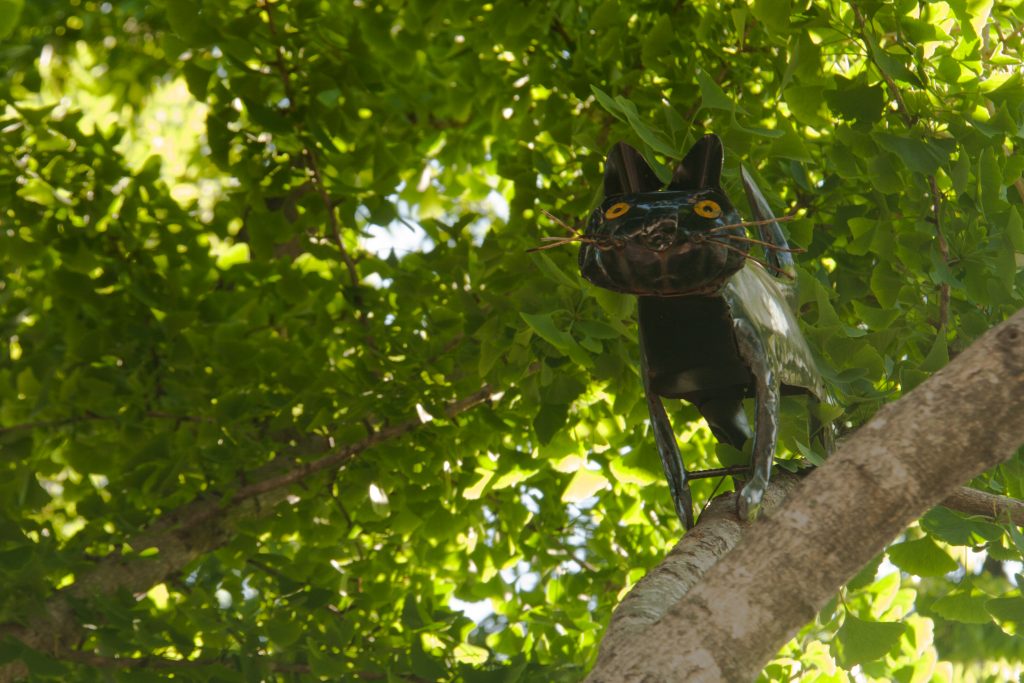
Last weekend I was in Austin for the 10th annual Garden Bloggers Fling. Garden bloggers from all over the country convened to visit, admire, and be inspired by private and public gardens. I was apprehensive at first, because I’m more of a plant person than a garden person. I don’t get a thrill out of magnificent, cultivated landscapes, or perfectly groomed yards and gardens. Ornamental edibles (or is that edible ornamentals) are what float my boat, so I approached each Austin garden from my own point of view.
I can’t say enough about how well organized the event was, how friendly the people were, how smoothly everything went. It was a mini vacation, and I thoroughly enjoyed myself. Plus I got to taste a few plants that don’t grow where I usually forage.
My companions probably wished I’d shut up as I pointed out what was edible in every garden, begged them to taste a flower petal, or handed them a juicy red berry. But I couldn’t help myself. If you find yourself in Austin, there’s plenty to eat!

The petals of pineapple guava (Feijoa sellowiana) taste like cinnamon (perfect for syrups). In fall, the fruit is equally tasty with a completely different flavor.
The pads of this prickly pear (Opuntia species) are tasty now; it’ll be a few more months before the fruit ripens.


Spiderwort (aka Tradescantia virginiana) produces edible shoots in early spring.
Joseph’s coat (aka Amaranthus tricolor) provides a tasty and nutritious green.


Harvest cholla (Cylindropuntia species) buds before the flowers open, then remove the spines and glochids, and dry the buds to preserve them.
Daylilies (aka Hemerocallis fulva) are an edible superstar, with four different edible parts.


Earlier in the season, this bamboo (Phyllostachys species) put out loads of edible shoots.
The tubers of rose mallow (aka winecups, aka Callirhoe involucrata) can be used to make a kind of hummus.


The loquats (Eriobotrya japonica) were perfectly ripe!
The tuber of Canna edulis can be roasted and eaten as a starch.


Passion fruit (aka Passiflora incarnata aka maypop) produces seedy, but tasty, fruit.
This ornamental wild spinach is Chenopodium giganteum ‘Magenta Spreen’.


It’ll be a few months before this persimmon (Diospyros) is ripe.
Yes, I admit it. I stole a few fruits off this agarita (Mahonia trifoliolata).


I may be stretching it with Dichondra argentea (aka silver pony foot) but D. carolinensis is a mild edible green, and I plan to research/experiment with this species as soon as it fills in a little more in my garden.
Remove the pistils and stamens from yucca blossoms, then sauté them and use them in quesadillas.


Pick unripe grapes (Vitus species) to make verjuice, or let them ripen and enjoy the fruit as fruit.
There you have it: my tastiest memories from the Garden Bloggers Fling 2018. Can’t wait to do it again next year in Denver.
Loved tasting some of those flowers and fruits while in the gardens with you. The Pineapple guava petals were delish and so were those loquats. I am going to give the yucca blossoms a try.
Thanks for trusting me enough to try a taste!
Next time I am going to stick close to you, and try all the plants! Thanks for a fascinating post – look forward to seeing you in Denver
Any updates on the whether the Silver Ponyfoot is edible? I’d really love more info.
Hi Lisa, I tried it this summer and was underwhelmed. I haven’t been able to find the green ponyfoot, but I’d like to make a comparison. I’ll be looking for seeds soon.